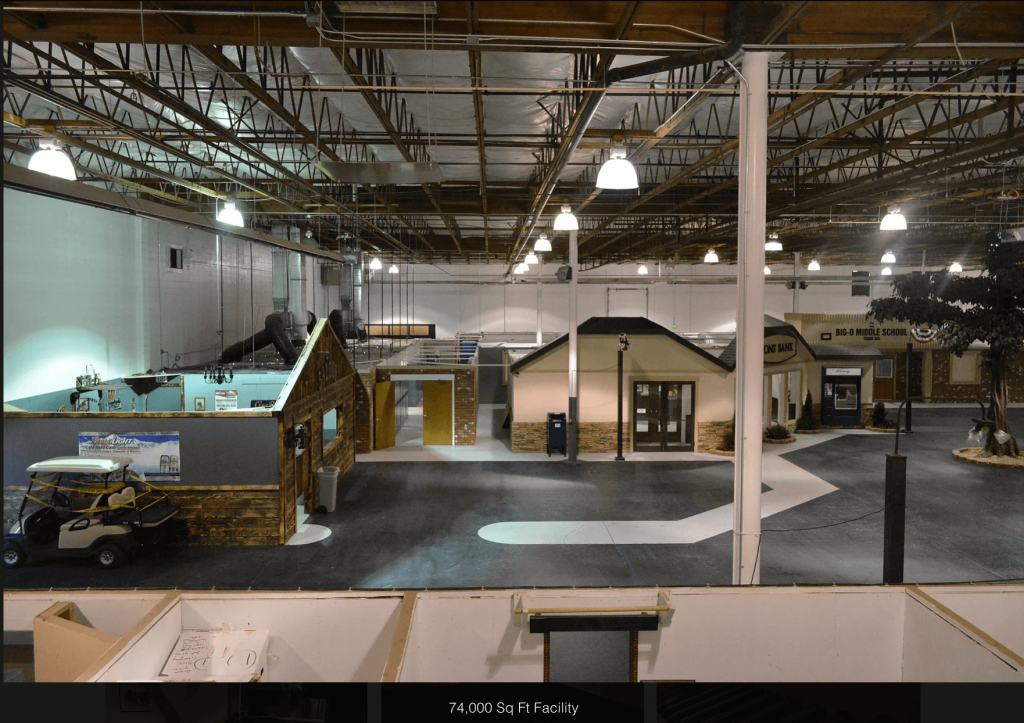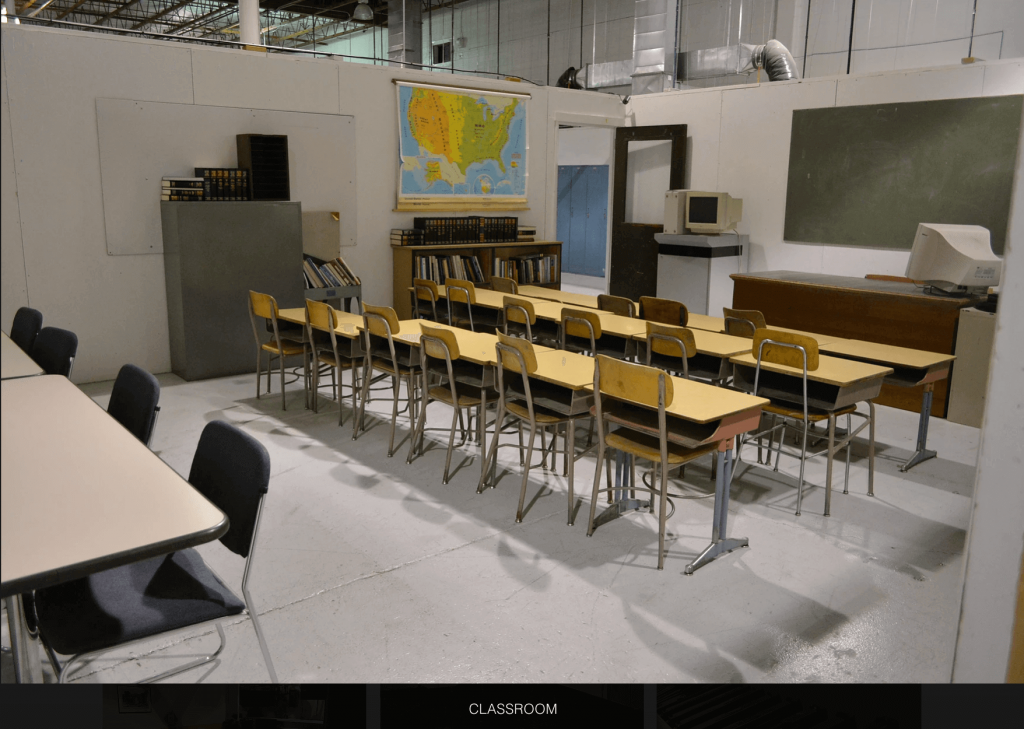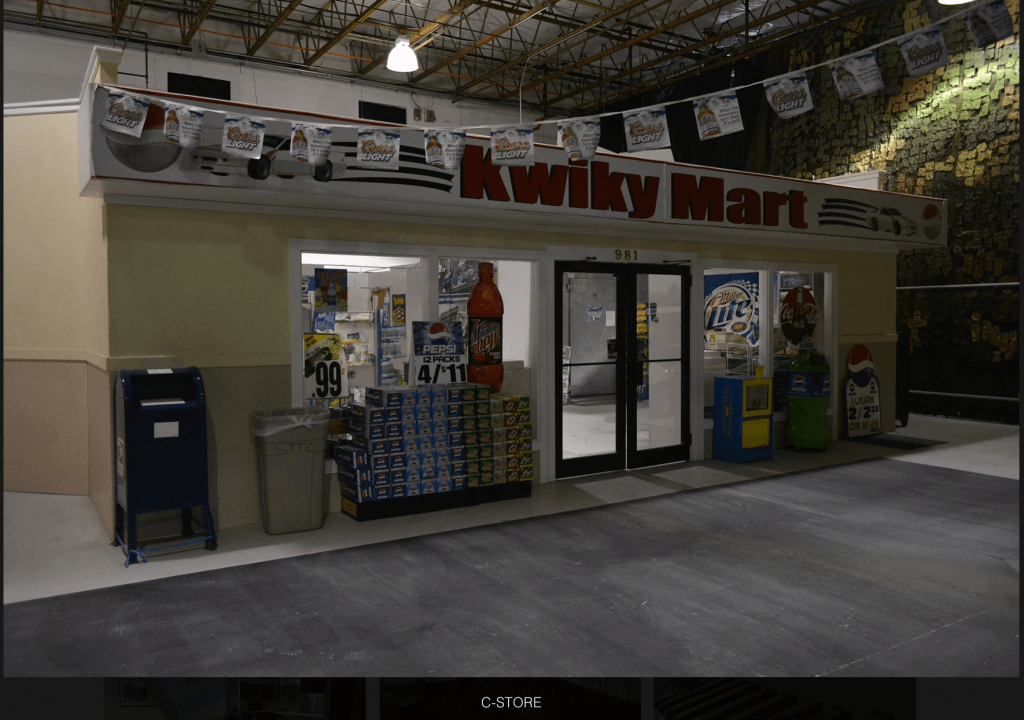Levels of Firearm Training - R.E.A.L. Training
The phrase that makes me shudder and shake the most is, “Oh… I’m good with my gun. I go to the range.” I hear this so much when I invite people out to the facility to improve their skills as CCW civilians. In fact… I’m serious when I say that 99% of the time, that is the response I get when I encourage people to come train with us. So that leads me to training. The word “training” is one of the most overused words in any industry. Especially in the firearms/self-defense world.
It is used so much, that everything and anything is being called “training” or a supplement or tool for “training.” The word seems to have lost its meaning. The impact is that no one is really “training.” And in this industry, if you are counting on using a firearm, knife, hands, etc. to defend your life or the lives of those you love or innocents and you think you are “training” for a potential or even inevitable altercation.
You’re probably mostly likely NOT “Training.” I’m pretty sure you get the point of the overuse of the word by now. The problem is, that as CCW Civies, we need to train. We need to be preparing consistently. These are “depreciating skills” which means that you will lose them if you don’t keep working and getting better. And, if the saying in the business is true, “You are half as good as you train,” when you get into an altercation, then we need to take a really hard honest look at our training and a good hard honest look at the current level of our skill set.
How good are we with our basics, our grip, platform/stance, and trigger press? How about recoil management, front sight alignment, focus on the front sight, recovery, and follow-up? How about shooting at speed, controlled pairs, hammer pairs, and failure drills like 2 to the body and 1 to the head (which I dislike immensely)?
What about our after-shooting procedures like scanning/assessing, noticing witnesses, dialog, and taking notice of the bad guys' weapon(s)? What about drawing your weapon from a concealed position, speed of target acquisition, and first shot? What about noticing other bad guys or potential threats, layoff men? What about reloads, emergency reloads, tactical reloads, and ammo management? What about shooting on the move, actually shooting while moving and not shooting while on the X and then moving to another X. What about moving to cover or to concealment at a minimum, what to do with people around you?
What about being able to manage your own physical stress symptoms like being out of breath, massively elevated heart rate, tunnel vision, audible exclusion, sympathetic limb response, etc.? What about knowing how to just prevent the risk altogether, or to harden the target (yourself) as to deter the bad guy so he decides that attacking you is not in his best interest, or if there is to be an attack, to detect it as quick as possible so you have the time and space to defend yourself and other.
These are just a few of the things that a CCW Civilian needs to consider when it comes to taking action with a firearm. In addition to those skills, we need to dig a little (a lot really) deeper into something more fundamental. A skill that plaques just about everyone carrying a firearm both professionally and individually. That skill is knowing “When To Actually Press The Trigger.”
Here’s something that we work on that was taught to us by a Colonel In The Special Forces (Chief Strategist) and who also went up through the Law Enforcement ranks and is now a Police Chief, among many other things he does in the LE and Military Community. I took the concept and adapted my own acronym to it so it was easier to teach and explain. That concept is understanding what I now call E.M.T. and I don’t mean Emergency Medical Technician. E.M.T in this industry is an acronym that stands for:
- E = Expression / Emotion
- M = Movement
- T = Tool
It is the sequence you use to judge a shoot or no-shoot situation and it happens in fractions of a second. I could go on and on and on, and, seriously on and on. This is just the tip of the iceberg when it comes to being “trained.”
So, as a CCW Civie myself, I was caught in this situation when it came to training. I wanted to be prepared and I wanted to train. But I was stuck. It seems that in this industry there is a massive GAP with people’s training commitments.
99% (maybe more) are just fiddling around on paper targets at some kind of range. And then there are the die-hard folks who attend training and love to practice. These are the people who spend quite a bit of money on all kinds of courses from tactical pistol to tactical carbine, etc. They spend money on ammo and always have ammo on hand, instead of buying the proverbial 50-round box at the retail range and still coming home with 20 rounds still leftover. You know, the guys whose hands hurt afterward, and not because of the grip texture.
These people also are the ones who are buying gear, apparel, special belts, have a collection of holsters that don’t work, rifle slings that they don’t use, cargo pants galore, couple of pairs of Solomon SF soft hiking boots. The kind that have upgraded their Glocks, have higher level optics, probably stippled their Tupperware pistol, and maybe even own a SIRT laser training Glock.
Do you see what I’m getting at? When it comes to training in this industry it’s either all or nothing. But it’s important if you are going to have a gun for self-defense in your home, and more importantly, if you are going to carry one on your person to train.
But if you ask people who don’t really train, or who have never taken one or more real firearms courses, why they don’t? The answers are pretty simple and clear. There’s no middle ground. Not everyone wants to be a Modern Day Gunfighter. I do. I want to be a modern-day gunfighter and I know a lot of other people reading this want the same thing.
We may be overreaching a little (or maybe a lot), but some of us, have it in our minds that we would like to be a combination of Chris Kyle and John Wick. But a lot of people don’t. But they do recognize the importance of training; they just don’t see any middle ground besides the Gun Range Meri-Go-Round syndrome. The “Gun Range Meri-Go-Round Syndrome” is going to the range every now and then, shooting some basic paper targets to see if you can hit the “bullseye”, and maybe buy one hostage target if you’re feeling a little saucy.
After you are satisfied with some form of a group, you pack it up and go home until the next time, whenever that may be. This cycle keeps going on and on and on and around and around. Never getting any better at target shooting, and certainly never getting better at any of the things we mentioned earlier in this article. After years of “training” and then years of actual training, I’ve created 4 distinct categories of what we, or most people might call training.
Plinking
I think we have already described this in the paragraphs above and I will say this, so people don’t think that I am discouraging “Plinking”. I am absolutely all for it. I want people at the range to familiarize themselves with firearms and do what they can do to hit the bullseye.
I think we all start out Plinking and then some of us, get the “bug” and we are off to the races to see how far we can take this thing. Whether in competitions or a more tactical approach. But, the fact is that few ever move beyond the Plinking Phase. And I think it’s because the average individual massively overestimates the power of having a gun.
They grossly miscalculate what will happen in real life if they ever need to use their firearms in self-defense and they have visions of movie scenes in their head about how it will all go down. They are still in the world of “One bullet will stop them” or “I’ll just shoot him in the knee” or even worse, “The sound of me rackin' my shotgun will make the bad guys run away.”
Yada yada yada it goes on and on.
Purpose Driven Practice
This would include everything from Competitions (which are forms of practice in my mind), working on Skills like drawing from the holster, reloads of all kinds, target acquisition to running Drills, and so forth.
This type of practice can be either Dry Fire or Live Fire in nature. Most times with dry fire, we are working from home, and even better if you can have some form of LASER set up like the SIRT, Cool Fire, or other modifications and some LASR Software to help you really understand your level of performance and what needs to improve.
Live fire practice allows this same situation but is restricted or not based on the range environment you have access to. We have a full laser range in our home combative studio, and the majority of all of our live fire is done on a private range where we have the full ability to run and gun as much as we want.
Essentially, as the term describes, you are practicing with a specific purpose in mind. And it is organized and has definite goals and objectives in mind with measurements of performance coupled with a breakdown of things to improve that performance.
Instructor Led
Whether competition or tactically based, you attend these courses in order to gain more insight and improve your skillsets. Most of this kind of training is still done on the line with live ammo and you are learning and practicing specific skill sets, sometimes based on time and performance, grading and adjusting to enhance your performance during the time you have during the course. It seems nowadays you can chuck a rock and hit a few instructors, no matter where you live.
Not so true in the competition world, but in the “tactical” (another overused word) world new instructors pop up every day. You just need to be careful and make sure you are training with qualified people. That’s another article in and of itself trust me.
R.E.A.L. Training
As Civilian CCW, at the beginning of my training days, I was fortunate to have access to one of the best guys in the industry. A former Special Forces Colonel who also went up through the Law Enforcement ranks all the way through SWAT to Police Chief.
In addition to that amazing opportunity, I’ve had an opportunity to train with legitimately some of the world's top Law Enforcement personnel and combat Veterans. So I’ve had a unique experience since I started training in self-defense gun tactics.
One of the places we have trained at since the very start was a 74,000-square-foot Urban Simmunitions Village made for the Feds. It’s literally 15 minutes down the road from our house.
So under the watchful eye and guidance of these top experts, I have had the fortunate opportunity to run Force On Force gun training since literally Day #1.
I’ve been able to train multiple days a month (almost every week for 1-2 days each time) in this facility. There is everything from a park to alleyways, homes, apartment complexes, a school, convenience stores, bars, banks, streets, 2-story office complexes, etc.
There’s room to park and move vehicles, and other objects to really simulate as close to real-life scenarios as it gets. So I have run Force On Force training is just about every scenario you could possibly imagine and a ton of situations you wouldn’t imagine. At first, you start out doing the basics, and then based on the experience of the men I’ve trained with they put us through the craziest stuff that only people like them have ever seen.
I’ve been fortunate to train everything from attacks in the park, fights in a bar, carjackings, one attacker up to a mob riot, the active shooter in the workplace, dirty bomb and multiple terrorists in a stadium, hostage situations, HRT, bank robberies, school shootings, drug deals, routines stops gone terribly wrong large facility clearings, team tactics, vehicle driving down the sidewalk and mass shootings, etc. Involving the use of your firearms, to no firearms.
From impact weapons to edge weapons to no weapons at all where going hands-on is all there is. From one attacker to multiple attackers. Counter abductions, escape and evasion, etc.
These are just training for civilians where you watch and learn and maybe do a little bit. These are full Force on Force training, what I now call R.E.A.L training where you can feel the stress, the pressure, and the results of whether you were successful in meeting your objective are very clear and obvious after the incident is over and you're running your after-action assessments.
I can tell you this one thing for certain. If you are not training like this you are not training at all. R.E.A.L Training (Real Environments Application Learning) literally changes your life.
This is one of the biggest reasons why I created, wrote, and produced the show The Ultimate Combat Warrior. You can see a TrailerSode (short promo episode) attached to this article. This version was done in an arena, but the majority of this training format is done in a mini version of our Urban Simmunitions Village.
So no matter where you are in your training make it a goal to test out those skills in more live fire (training munitions) scenarios and see how you're doing and what you need to work on when you go to the range and throw real ammo.
We train with simminutions or UTM (they’re different to a degree) when we train. We have both the AR bolts and the Glock conversions.
You don’t have to go that far, but minimally good airsoft gear. We don’t wear much protective equipment when we train mostly face and eye pro.
Other than that, probably a cup for the guys and that’s it. It’s supposed to hurt. Pain is a great teacher they say, and I can tell you it’s true. You learn to not get shot, when you keep getting shot during R.E.A.L Training scenarios.
This seriously adjusts everything you think you know or think you are going to do if the crap hits the fan. People talk a big game until it comes time to get real. Like Mike Tyson said, “Everyone has a plan until they get hit in the face.”.
Well, every gun guy thinks they’re the man until you’re hunting an active shooter in a school by yourself and you have no specific idea where he’s at in the building. Then all of a sudden, if you’re rolling the scenario with the right mindset, you realize you are at a serious disadvantage and if this was a real situation, you could be dead at any second.
That kind of simulated stress changes everything you think you know and think you would do. The “tough guy” BS, goes right out the window and you quickly realize how bad you suck at gunfighting and tactics. I’ve been fortunate to participate extensively in this type of training for the last 5 years and we run this in our own personal time also.
I have yet to see out of the thousands of so-called “trained civilians” someone come in and not fail almost every time. From the tactics to the serious lack of speed of their reactions and their draw to the pure fact that honestly, 95% of the time they never can put solid hits on target - NEVER.
Take it from me playing OP4 for all those years. I have almost never been hit center mass and NEVER in the face. But I can say that I have killed every single civilian defender in these situations, and almost always when training with local Law Enforcement, even at the FED level.
I will say this though our SWAT guys here are on point. Why? Because this is how they train.
Conclusion
So, in conclusion, do I think that R.E.A.L Training is the best type of training?
I’m not saying it’s the best, as much as I am saying if you want to know your chances of surviving in a gunfight you don’t know jack crap if you’re not training like this. You will know not only your skills but how all your gear works and holds out.
Do lasers on pistols really help? Will your optic make it easier to get rounds on target? Which is the best place to carry on the body? What about Off Body Carry? Can a gal access her firearms if she’s carrying them in her purse? Even a purse made for CCW? How do those subcompact firearms work out in the heat of things? Do you really see your sights when it all goes down? Are you fit enough to even handle the stress of being in a life-threatening altercation? And on and on and on.
The only way you know the answers to any of these questions and every other question is to “spar” with the gun. The only way to do that is to do R.E.A.L Training. The gear I carry every day, the way I carry every day has been decided upon based on 5 years of constant sparring with the gun with pain as a consequence.
It either works and I win or it doesn’t and I am DEAD. That includes my mini-ifak and what TQ I carry every day on my person.
Give this type of training a try. Start small and slow, then increase the intensity and I can assure you that your confidence will grow steadily as will your respect for the firearm and the reality of being in these types of situations really means.
I have been in 5 gunfight-type scenarios as a civilian, where I was getting shot at and where I had to draw and use my weapon. The latest situation was I surrendered a Glock23 as I got arrested and taken to jail for defending my family in a broad daylight attack on my home.
The police weren’t sure who was the bad guy and who was the good guy, so they arrested everyone. Guns drawn, they commanded me to place my firearm on the ground and get on my knees.
I did and they pushed my face down on the grass, handcuffed me, and put me in the back of the squad car. On the way to the station, they tried to interview me, recording the conversation.
I know my rights and I’ve practiced that post-shooting dialog a million times before. They booked me in, I bailed out the next morning thanks to my awesome wife. And then we figured it all out in court.
So I also understand from first-hand experience the realities of how to respond to the police when you're the good guy, how to deal with the court, and how lacking the system is when defending your rights when you’re in the right.
All of that ability to respond correctly is due to R.E.A.L Training.
So, my perspective on this subject is pretty healthy.
Thanks for reading, stay vigilant out there.



















